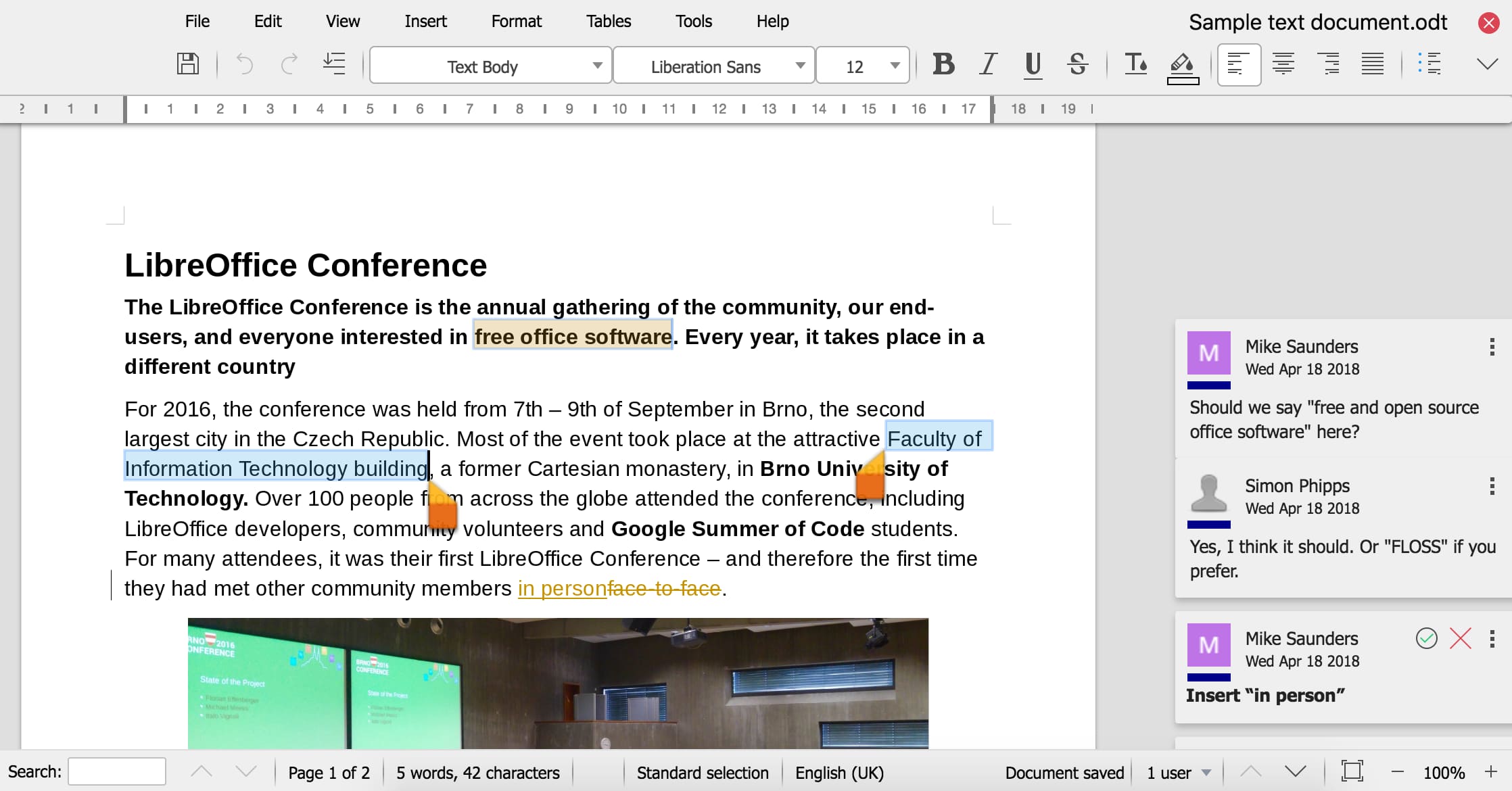This makes the exchange between EMF/WMF written by old and new LibreOffice Versions complete: no old written files are lost or need to be reproduced. This is unfortunately not possible for other Windows-Applications, so these EMF/WMF files produced by older non-Windows LibreOffice Versions have - as a workaround - e.g. Be loaded and rewritten.
Here are the sections on this Web page:
You also can obtain LibreOffice through the Mac App Store, called LibreOffice Vanilla. Click here to see a page about this version.
Mac LibreOffice vs. Windows and Linux versions

Mac; Office suites, productivity and business; LibreOffice Mac 7.1.0 LibreOffice is an alternative project to Office for Mac that offers us a pack of office applications totally compatible with Microsoft's famous suite. LibreOffice / ˈ l iː b r ə / is a free and open-source office productivity software suite, a project of The Document Foundation (TDF). It was forked in 2010 from OpenOffice.org, which was an open-sourced version of the earlier StarOffice.
LibreOffice for the Mac has all the features and applications that the Windows and Linux distro versions have. However, when it comes to being installed, the Mac version of LibreOffice has less options than the other two.
The Windows version has a typical installation and a customized installation, that allows users to choose user interface languages, components, and dictionaries through an installation wizard. The wizard also has features that allow the installed LibreOffice to be modified and uninstalled. In addition to this, there are several versions of the suite in the Windows 10 Store and a portable version that can be taken from computer to computer.
Many Linux distros come with LibreOffice preinstalled, or the it can easily be installed through the distros PPA. Users can install individual applications, and they don’t have to install the entire suite. There are also several different ways to download the suite: directly through the Website, through Snap, through Flatpak, as an AppImage, etc.
The Mac version can either be downloaded directly from libreoffice.org or installed through the Mac Store. Unlike the Linux versions, only the entire suite can be installed. Individual applications cannot be left uninstalled. It also doesn’t have individual icons for each application. In order to launch LibreOffice without clicking on a document that has already been created, you have to click the white icon that launches StartCenter.
Download from Website
The most common way to install LibreOffice is by downloading the DMG file from libreoffice,org and then running the installation process. The specific page is https://www.libreoffice.org/download/download/
- If you are visiting the Web page on your Mac, the Web page will recognize that you are using a Mac and shows macOS in the drop-down menus for the two versions that are available.
- If you are not using a Mac, simply click the drop-down menu for one of the two version choices. Then click on macOS (64-bit).
The latest version is on top. It has the latest features and changes from the development team. The bottom version is older, but most likely has less bugs because it has been tested for a longer period of time.
Simply click the Download button for the desired one. NOTE: You may want to change the location where your browser downloads the DMG.
After clicking the Download button, you will be taken to a Donation page. There is no need to make a donation. The download has already started.
Installing
Once the DMG is downloaded, go to where the file is located. Double-click it. This opens a dialog that allows you to drag an image of the LibreOffice icon to an image of the Applications folder.
- Click the LibreOffice image and hold down the left-side of the mouse button.
- Drag the LibreOffice image into the image of the folder. This will start the installation process.

To launch the application, go to the the Application folder, and double-click the LibreOffice icon. It will launch and the icon will appear in the Dock.
If LibreOffice does not launch, go to the Security & Privacy page in Settings and set it to App Store and identified developers.
- Click Settings, either the icon or System Preferences in the Apple menu, to launch Settings.
- Click the Security & Privacy icon.
- Click the General tab
- If Allow apps downloaded from cannot be changed, click the lock in the bottom, left of the dialog.
- Type your password in the dialog that appears.
- Click the Unlock button.
- Click the radio button for App Store and identified developers
- Click the lock in the bottom, left corner of the dialog.
- Return to the Applications folder and double-click the LibreOffice icon.
Other pages related to LibreOffice for Mac

Libreoffice 7 Mac Version
Here are other pages specifically about LibreOffice on Mac:
LibreOffice has long since moved on from being an offshoot of the OpenOffice project. It's now the go-to alternative to Microsoft Office, enjoying regular development and a constant tweaking to keep it up to date, stable and secure.
While LibreOffice lacks the slick presentation of rival Windows freebie Kingsoft Office Suite Free and its Office-inspired ribbon interface, it has the major advantage of offering a full set of office applications, including database, drawing package and mathematical tool on top of the requisite word processor, spreadsheet and presentation tool found in most free office suites.
Libreoffice 7 Mac
While it’s definitely more navigable than before thanks to better placement of tools and visual previews of styles direct from the main toolbar, it still looks a little dated, despite the refreshed icon sets. Nevertheless, this is still a powerful suite capable of meeting most people's needs, making this zero-cost alternative to Office a valuable tool to have in your armoury.
Ever-improving support for third-party file types (including both new and classic Office formats) means you're not cutting yourself off from industry standards while cross-platform support means you can run LibreOffice on Windows, Mac or Linux without having to retrain yourself to a new way of working each time.
Verdict:
Libreoffice 7 Macos
Don’t be put off by the dated user interface – LibreOffice is a powerful tool that includes all the core functionality most people will ever need.
